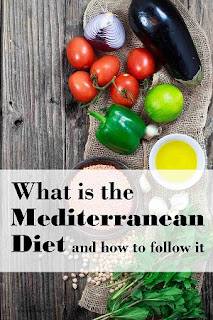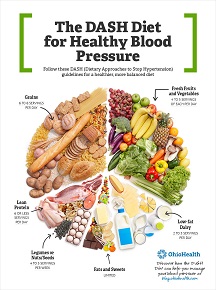Want to eat healthier in 2020? What does “eating healthy” mean? In the class I teach, students are always
recommending we eat healthier diets. But
when I ask them what this means they often struggle to come up with
specifics. Many people make a resolution
to go on a “diet” for the new year. Why not
go on a “diet” to eat healthier? Are
there healthy diets to follow? A diet not
for weight loss or weight gain, but just a healthy eating pattern? Not a “diet”
you go on for a week or two but a healthy eating pattern diet that you can go
on all year long. I was watching TV
recently and the host noted that every January they go on the Whole30
diet. Is this really a healthy diet to
go on? People may think they are eating
healthy by following the Whole30 diet.
According to the Whole30
website, food groups like grains and dairy have a negative impact on
health. US News & World Report gives the
Whole30 diet a poor rating and a low ranking.
Why? The diet is quite
restrictive and excludes grain (an important food group), legumes, even peanut
butter, and dairy – another important food group. Whole grains are hugely important in our
diets for fiber, trace minerals and other nutrients. Rather than excluding whole grains, Americans
should be eating more whole grains. Dairy
foods shouldn’t be restricted as dairy foods contribute calcium and vitamin D
which so many Americans are lacking in their diets. Any diet that excludes a food group and thus
excludes nutrients that the food group provides, is not a healthy diet. So how do you decide what is a healthy
diet?
Each year, the US
News & World Report evaluates the “Best Diets”. For 2020, they evaluated 35 popular diets
and determined which ones were easy to follow, provided good nutrition, and are
best for your health and fitness. What
do they look for? They use health
experts to rank diets on a number of parameters including how nutritious the
diet is, how safe it is and whether the diet protects against diseases like
diabetes and heart disease. Top spots
for 2020 went to Number One: the
Mediterranean Diet, Number Two: the DASH
diet that tied with the Flexitarian Diet.
 |
| Best Diets for 2020 |
Diets that ranked as the “Best Diets” for 2020
1. Mediterranean Diet
– for the second year in a row, this diet remained number one. In the nutrition class I teach, we often talk
about the Mediterranean Diet and why it is so good for one’s health. This diet is based on the foods people eat in
Greece and other countries around the Mediterranean Sea. Not only is their diet
rich in fruits and veggies, they lead an active lifestyle. Many nutritionists and health experts
recommend this pattern of healthy eating.
Rather than giving up a food group, this diet recommends foods from each
food group – but healthy foods from each group.
a.
Why is
this diet good for your health? The
Mediterranean diet is a good diet for disease prevention – prevention of cancer
and diabetes. It is diet for healthy
hearts and a healthy brain. And, you
can use this diet for weight loss.
Basically, for a healthier
you in 2020. To get started, try the
30-Day Mediterranean Diet Challenge at Eating
Well. Rather than go on the Whole30 for 30 days,
choose to try the Mediterranean Diet for 30 days.
b.
Foods to enjoy:
fruits, vegetables, olive oil, nuts, and fish.
i.
Choose low-fat dairy – 2%, 1% or non-fat
milk. Choose low-fat yogurt. Buy cheese that is made with low fat or skim
milk like mozzarella
cheese. Real dairy is so important
to your health. Focus on eating real
dairy foods at every meal.
ii.
Whole grains – as noted in a previous blog,
so many Americans have few or no whole grains in their day. Find a way to add whole grains to your daily
food intake and to your kid’s diet.
Starting the day with oatmeal or Cheerios is a good way to add whole
grains to your day.
iii.
Fruit and Vegetables – 5 A Day is a
start. More than 5 A Day is even
healthier. As noted in last week’s blog, bring a vegetable with you for lunch
every day. Simple changes can be oh so
good for your health.
iv.
Nuts – add a handful of nuts a day
v.
Olive oil – buy some Extra Virgin Olive Oil
(EVOO) and use it in cooking.
2. DASH Diet – this diet stands for Dietary Approaches to Stop Hypertension, thus the acronym, DASH. Although it was designed to help
lower blood pressure, the diet is good for your health. U.S. News & World Report notes the diet
is praised for its nutritional completeness, safety, ability to control
diabetes, and prevent high blood pressure (hypertension). The focus on fruits, vegetables, whole grains
and real low-fat dairy, loads the diet up with potassium, calcium, protein and
fiber. These nutrients help lower blood
pressure.
a.
Nutrients – the diet emphasizes nutrients that
help lower one’s blood pressure like potassium and calcium. It encourages more fruits, vegetables, whole
grains and lean protein and dairy – but low fat dairy products. Be sure to choose real dairy, not fake
dairy.
b.
Foods to limit are those higher in saturated
fats like fatty meats, full-fat dairy foods, coconut oil, and foods high in
salt. Also, cutting back on added sugar
by cutting back on sodas, sports drinks and other sugar-sweetened beverages and
sweets high in added sugar.
c.
To get more guidance on the DASH diet from the
National Heart, Lung, and Blood Institute, get a 20 page guide, DASH
Eating Plan or a 6 page guide at Lowering
Blood Pressure with DASH.
Although the DASH diet was
designed for lowering high blood pressure, it is a good overall pattern of healthy
eating.
a.
You ADD these foods to your diet:
i.
Plant-based protein and eggs = tofu, beans, lentils,
peas, nuts, eggs and seeds.
ii.
Fruit – all kinds
iii.
Vegetables
iv.
Whole grains - including brown rice, Quinoa, oats, buckwheat and barley
v.
Herbs and spices – spices are super healthy so a
good addition to any diet,
vi. Oil – olive oil
vii.
Protein – emphasis on fish and poultry
viii. Dairy - - real dairy - milk and yogurt
So rather than going on some crazy diet plan in an effort to
eat healthier in 2020, choose one of the above diets to begin modeling your own
eating after. Healthy eating doesn’t
mean giving up all the foods you like to eat, but adding foods that promote
good health like more fruits and vegetables, more whole grains, and more low-fat
real dairy to your day. Rather than
focusing on foods to cut from your diet to eat healthier, focus on what healthy
foods you can add to your day.



No comments:
Post a Comment